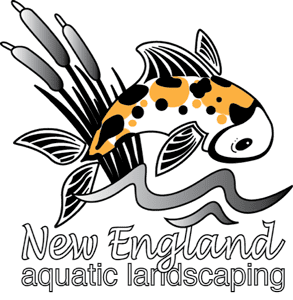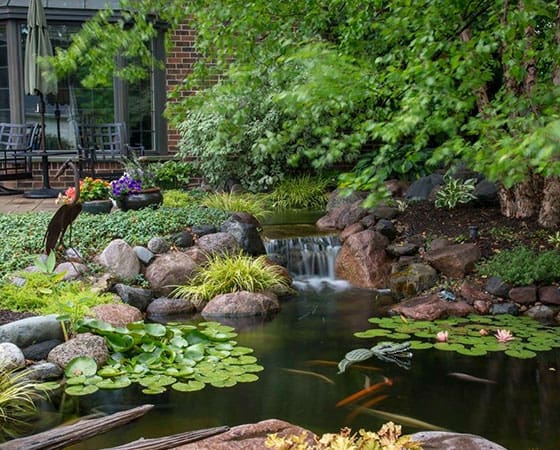Plants are critical to a healthy pond ecosystem in many ways, and understanding what plants bring to your pond can help you add just the right vegetation to reap the biggest benefits. In your pond, different plants will…
- Limit Algae Growth
Because pond plants block sunlight from the depths of the water, they help minimize unsightly algae growth that can clog filters and turn water murky. Plants also use plenty of the nutrients in the water, which will also keep algae from thriving. - Shelter Fish
If fish, frogs and other aquatic wildlife have a home in your pond, the right plants can provide safe shelter to protect them from potential predators. Many fish and other wildlife will also nibble on plants as a natural food source. - Oxygenate the Water
Plants help raise the oxygen level of your pond’s water, making it healthier for fish and reducing the need for artificial bubblers or oxygenators. When fish lack proper oxygen, they are more susceptible to diseases and poor health. Algae also thrives in low-oxygen water. - Filter the Water
Because plants absorb nutrients from the water, they are part of a natural filtration system that can keep your pond looking pristine. While overcrowded or sickly plants can die off and create murky water and excess debris, properly balanced plants are excellent natural filters. - Naturalize the Setting
Plants help soften the barriers between your pond and the rest of your yard, creating a more organic, natural look to the landscape rather than stiff, artificial borders. Use plants to mask pond equipment, drains, piping or other artificial structures such as fences or posts. - Improve Beauty
Plants can be a lovely feature of any pond. Unique foliage shapes and colors, aquatic blooms and interesting growth habits all add visual interest to your pond, creating a stunning waterscape you can enjoy for years.


